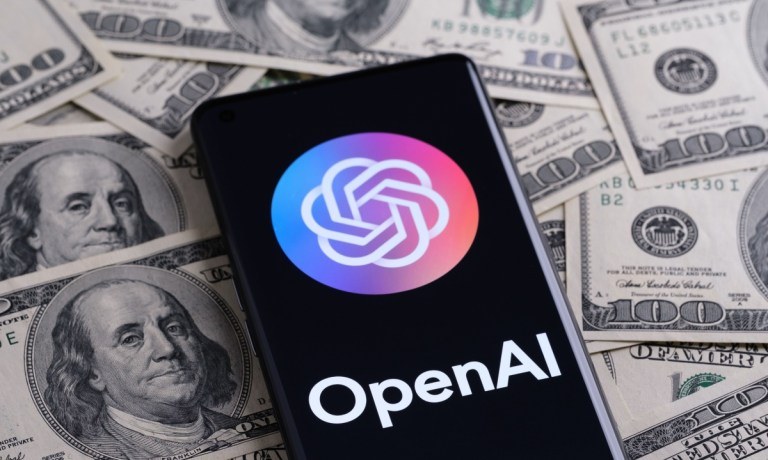
OpenAI’s reported bid to raise $6.5 billion at a $150 billion valuation could signal a new era in artificial intelligence (AI) commercialization, potentially reshaping entire industries and sparking a fierce battle for market dominance.
The new valuation, which doesn’t include the money being raised, marks a big jump from the $86 billion figure established during OpenAI’s tender offer earlier this year. If successful, this fundraising effort would solidify OpenAI’s status as one of the world’s most valuable startups and signal a seismic shift in the AI industry.
“We’re seeing a consolidation of capital around clear winners in the general LLM [large language model] space — OpenAI, Perplexity, Mistral, LLaMA,” Hannah Chelkowski, co-founder and general partner at Blank Ventures, told PYMNTS. “This funding round further cements OpenAI’s position as a leader in this space.”
The commercial implications could be far-reaching, with businesses across sectors rushing to integrate advanced AI capabilities into their operations. Companies successfully leveraging OpenAI’s technology may gain substantial competitive advantages, potentially disrupting traditional business models and reshaping entire markets.
Observers say the AI fundraising effort could lead to a surge in AI-powered products and services across various sectors. Retailers might deploy more sophisticated chatbots and personalized shopping experiences, financial institutions could enhance fraud detection and algorithmic trading, and healthcare providers might leverage AI for more accurate diagnostics and treatment plans.
Competition among AI infrastructure companies is likely to intensify. Asaf Charnilas, an investor at Team8, told PYMNTS, “OpenAI sits within a unique category in the AI industry — the category of companies building the basic infrastructure of AI.” He suggested that other players in this space may need to secure larger funding rounds to keep pace.
The effects of OpenAI’s fundraising on consumer AI products are yet to be determined. Charnilas suggested that improved infrastructure could lead to lower costs for running AI models, potentially decreasing prices for end-users. “The high valuation and influx of cash to OpenAI could actually have a positive impact on AI product pricing and accessibility,” he said.
Chelkowski offered a perspective on potential revenue streams, stating, “We expect we’ll see a new form of embedded advertising spend as a revenue stream for OpenAI.” This could introduce new business models in the AI space, where services might be offered for free or at a lower cost, subsidized by targeted advertising.
Rumi Morales, a partner and board member at Outlier Ventures, stressed that strong execution is crucial in the fast-changing AI industry.
“The key for OpenAI will be whether it can continue to innovate rapidly, maintain a strong execution-focused culture, and offer a product that delights users at the right price,” Morales told PYMNTS.
The unprecedented scale of this fundraising round signals a shift in market expectations for AI companies. “With this being the largest venture round in history, this signals the general market sentiment that we’re at a unique point in time and the expectation of outcome potentials are magnitudes larger than historical outcomes,” Chelkowski explained.
This sentiment is driving investment across the AI sector. Chelkowski predicted, “We suspect there to be multiple mega-rounds in well-funded AI computing, training and developer-led tooling.” This influx of capital could accelerate AI research and development, leading to breakthroughs in areas such as natural language processing, computer vision, and machine learning.
Some experts urge caution amid the excitement. Morales noted, “There’s still some responsible skepticism around the valuations of AI and tech companies.” She added, “Those who have been in the industry for a while have seen various AI and tech hype cycles come and go.”
Charnilas highlighted the unique position of AI infrastructure companies, saying, “Companies within this category, which also includes companies like Anthropic and Google DeepMind, are building the AI models and infrastructure upon which the majority of AI applications will run.” This suggests that the impact of OpenAI’s fundraising could extend far beyond the company itself, influencing the entire AI ecosystem.
OpenAI’s fundraising success brings both opportunities and challenges for the broader AI industry. Charnilas pointed out, “For other AI infrastructure companies competing directly with OpenAI, this massive investment will make the competitive environment more difficult and will provide OpenAI with a significant advantage in developing the next generation of AI models.”
The fundraising could also impact the dynamics between AI infrastructure companies and those building AI applications. Charnilas explained, “For the companies building AI applications, the dynamic will be different — the influx of cash for one of the leading AI infrastructure companies will ultimately provide better infrastructure for all AI application companies, allowing them to develop more advanced applications and solutions.”
Morales highlighted the changing accessibility of AI technology, noting, “AI is more accessible than ever, both to developers and the general public. No longer confined to black boxes owned by governments or FAANGs [Facebook, Amazon, Apple, Netflix and Google], open-source and decentralized AI is reshaping how startups approach this space.”
The AI landscape evolves rapidly, and companies will need to adapt quickly to stay competitive. Chelkowski emphasized the challenges this presents, particularly for companies building on top of existing AI infrastructure: “This funding round … exacerbates the challenge that wrappers around the technology will have in building defensibility and long-term sustainable value creation.”
In this high-stakes environment, the ability to innovate and execute effectively will be crucial. Morales aptly summarized the situation: “One centralized company will not rule them all, and we’re in for a fun ride.”